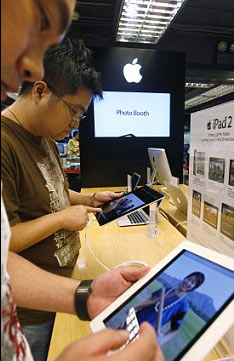 Chinese manual? European power plug? The globalisation presents bidorbuy buyers and sellers with new challenges. Here’s our take on how to deal with them.
Chinese manual? European power plug? The globalisation presents bidorbuy buyers and sellers with new challenges. Here’s our take on how to deal with them.
Let’s face it. Practically everything nowadays is Made in China (or thereabouts). And we are not talking only about clothing and trinkets. Many high-tech brand names have moved their production to Asia. Naturally, cheap and (more often than not) nasty brand-name look-alikes are also mushrooming. Sometimes, it can happen that the very same factory that manufactures brand-name goods rolls out similar-looking OEMs, and markets them at the fraction of the cost. With a very good reason: the OEMs do not have to pass the stringent quality controls.
Buyers (on bidorbuy and elsewhere) should always bear that in mind.
As for bidorbuy sellers who offer imported goods, globalisation presents them with new challenges. We suggest that they rise up to them by adhering to a few simple rules (do note that some are compulsory, while others constitute best practice):
- Never misrepresent an OEM product and try to pass it for the “real thing”. Not even by the means of a brand-like logo discretely placed on the product or the product’s box. This constitutes a trade mark breach. That contravenes the bidorbuy rules. It is also illegal.
- If the product comes only with the manual in the language of the country of origin, make sure to supply an English version.
- For products with non-standard power plugs, go the extra step and throw in an adapter, so that your customer is able to use them in conjunction with South African sockets.
- Always put yourself in the position of your customer and try to service them to the best of your abilities. Or you will lose out in this globalised marketplace.









